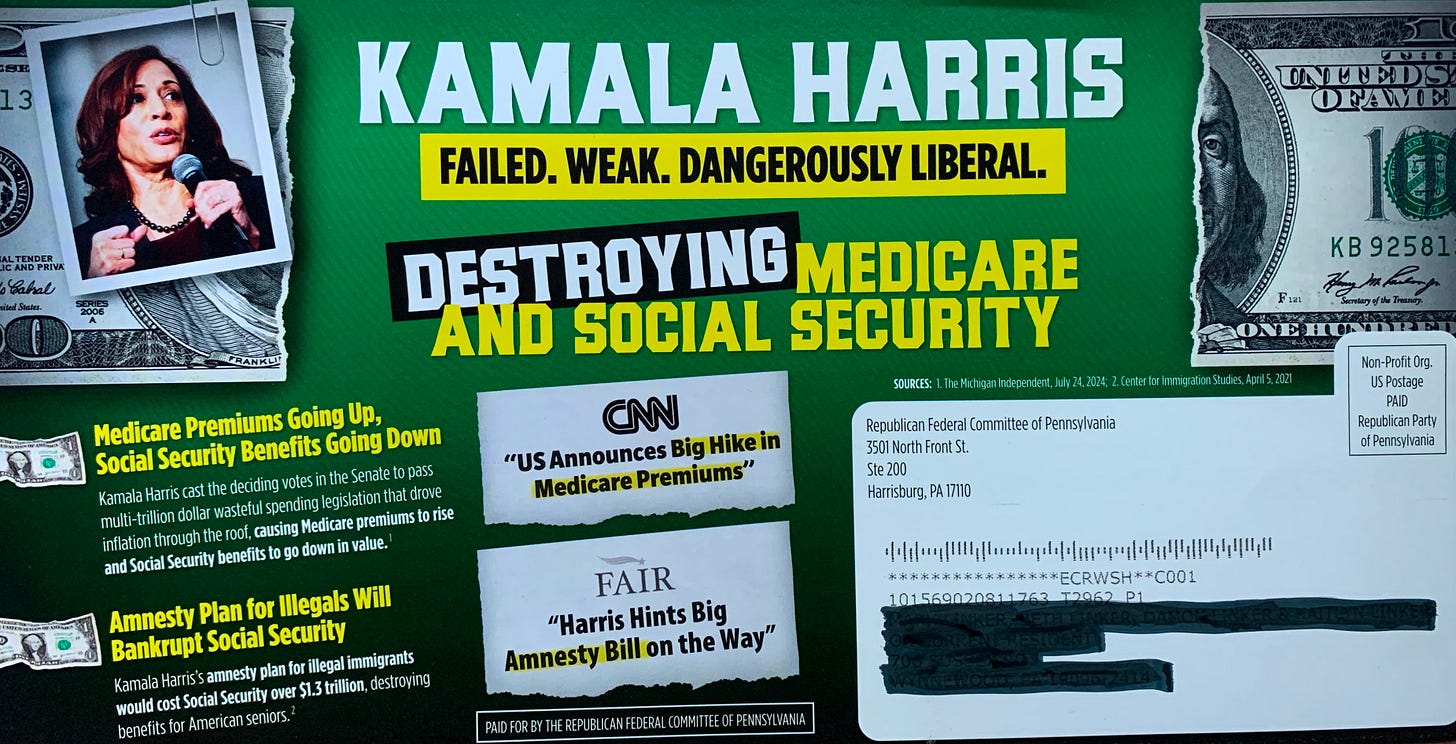The Politics of Unreality
Harris and Trump are running neck-and-neck. That very closeness is leading both candidates to embrace an almost comical degree of flexibility on policy

As a couple of recent posts make clear, I’ve been feeling uncharacteristically upbeat about the presidential race since Joe Biden dropped out and Kamala Harris took over. But that doesn’t mean my innate skepticism and tendency toward pessimism have gone away.
Harris’ entry into the race turned it around. Joe Biden was losing his bid for re-election and possibly on track to lose in a landslide that would have seen Donald Trump winning far more decisively than he did in 2016. That is no longer at all likely. Harris is consistently leading in national head-to-head polls (something Biden never managed to do in the nine months prior to stepping aside as the presumptive Democratic nominee). She’s also ahead in six of the seven most crucial swing states. All of that is very good news.
Yet I have concerns. For one thing, Harris’ national lead is much smaller than Biden’s was through the late summer and fall of 2020. As of September 2, she was 3.2 points ahead of Trump in national head-to-head polls. Four years ago on this date, Biden was leading by 7.5 points. That lead expanded to more than 10 points in mid-October 2020, with the gap closing slightly (to 8.4 points) on Election Day. Biden ended up winning by 4.5 points. That nearly 4-point polling discrepancy was largely a result of Trump overperforming his polls by 3.4 points. (Biden also underperformed by 0.5 points.) If the election were held to today and Trump overperformed by the same amount this time, he would end up slightly winning the national popular vote—and easily prevailing in the Electoral College, given the presumably still-decisive Republican advantage there.
Of course it’s possible the polls are no longer undercounting Trump’s support, and even that this time the error will run in the other direction (with Harris’ support undercounted). But we just don’t know.
What we do know is that if today’s swing-state polls are correct, Harris is slightly ahead of Trump, but by extremely narrow margins. FiveThirtyEight and RealClearPolling, the two most widely cited polling aggregators, show Harris most solidly ahead in Wisconsin (FTE +3.2/RCP +1.4), Michigan (+2.4/+1.1), and Pennsylvania (+1.2/+0.5)—though, as you can see, by just a handful of points. The rest of the swing states (Arizona, Georgia, Nevada, and North Carolina) are all within one point, making them statistical ties.
The good news is that, assuming the polls are accurate, it would only take a small move toward Harris (or away from Trump) for her to win all seven swing states and as a result prevail in the election overall. The bad news is that, assuming the polls are accurate, it would only take a small move toward Trump (or away from Harris) for him to win several of those decisive states and as a result prevail in the election overall.
Meaning: Nine weeks out from Election Day, the race is close to being a dead heat.
Where the Unreality Comes In
That’s pretty concerning. But it’s hardly evidence of unreality. On the contrary, the reality of the past decade of American politics has been precisely this: An intense and often deranging political standoff and war of attrition over inches of electoral territory. That reality seemed like it would be ended by a decisive Biden victory in 2020. But his 4.5-point national popular vote win translated into an extremely narrow victory in the Electoral College. And then it seemed like 2024 might end the standoff in the other direction, with a sweeping Biden loss and Trump’s most decisive win yet. But that, too, was not to be. Harris taking over as the Democratic nominee has seemingly put us right back where we were in 2016 and 2020—with the two parties desperately jockeying for position and hoping to prevail by a nose in a photo-finish.
And that’s where the unreality comes in.
Keep reading with a 7-day free trial
Subscribe to Notes from the Middleground to keep reading this post and get 7 days of free access to the full post archives.




